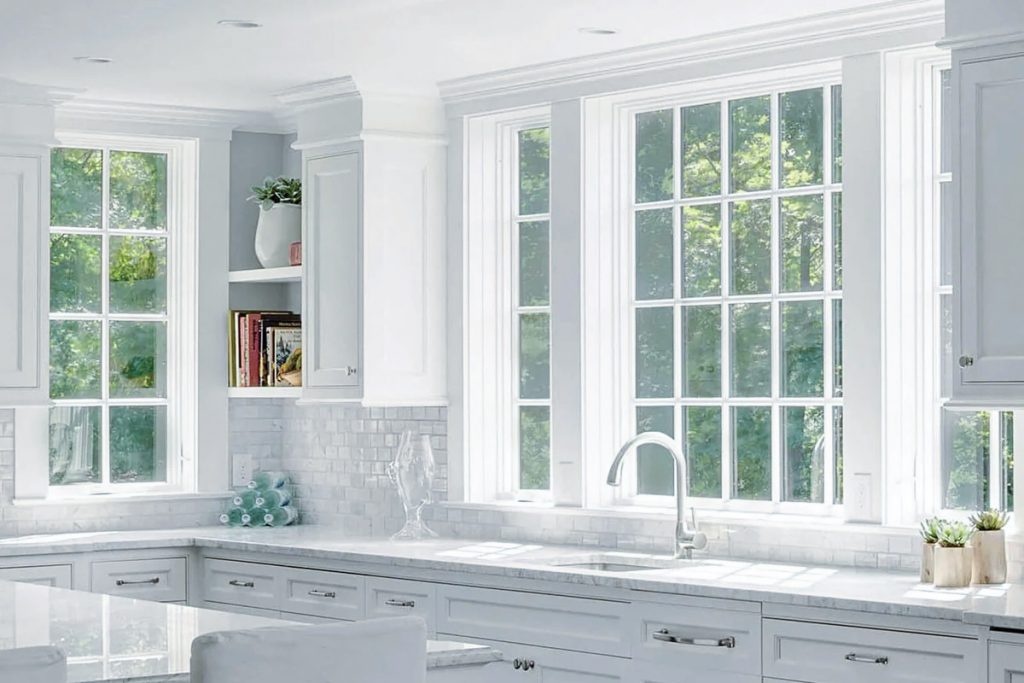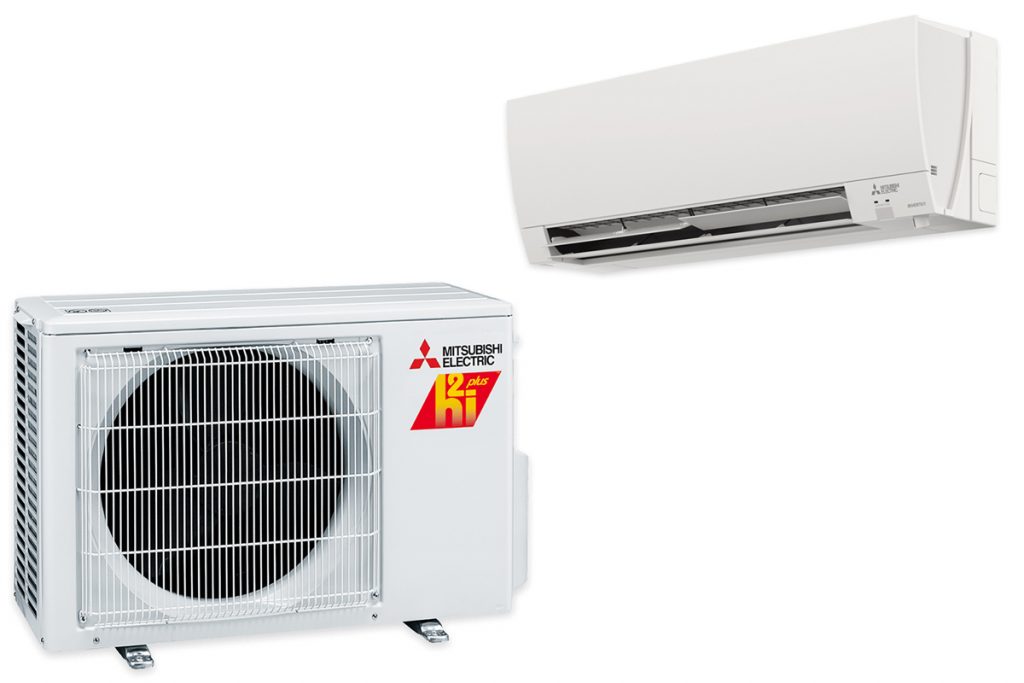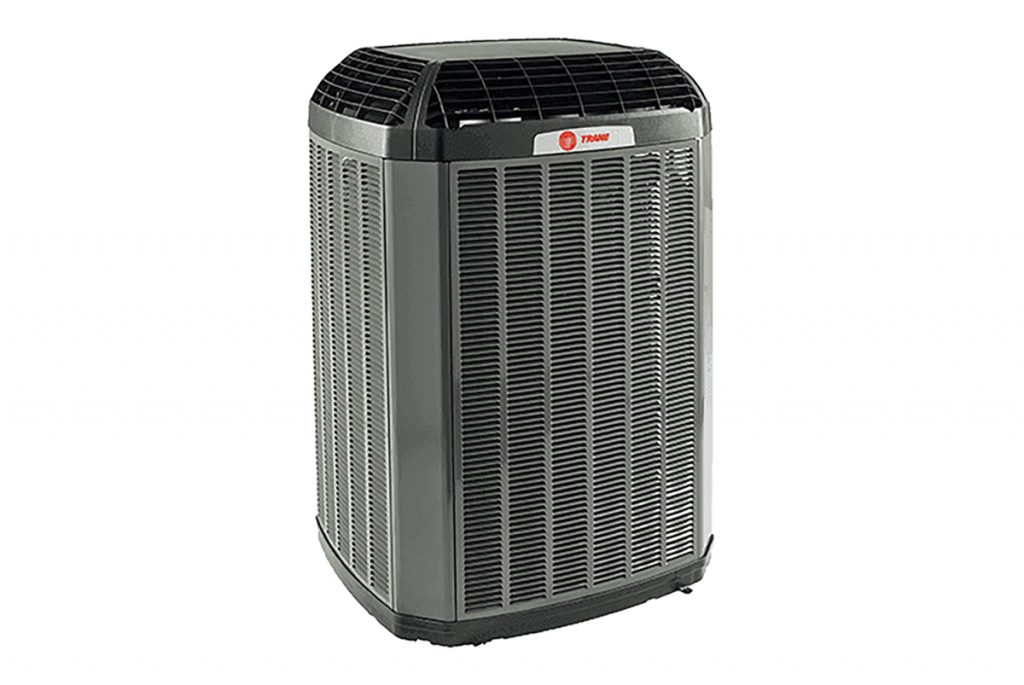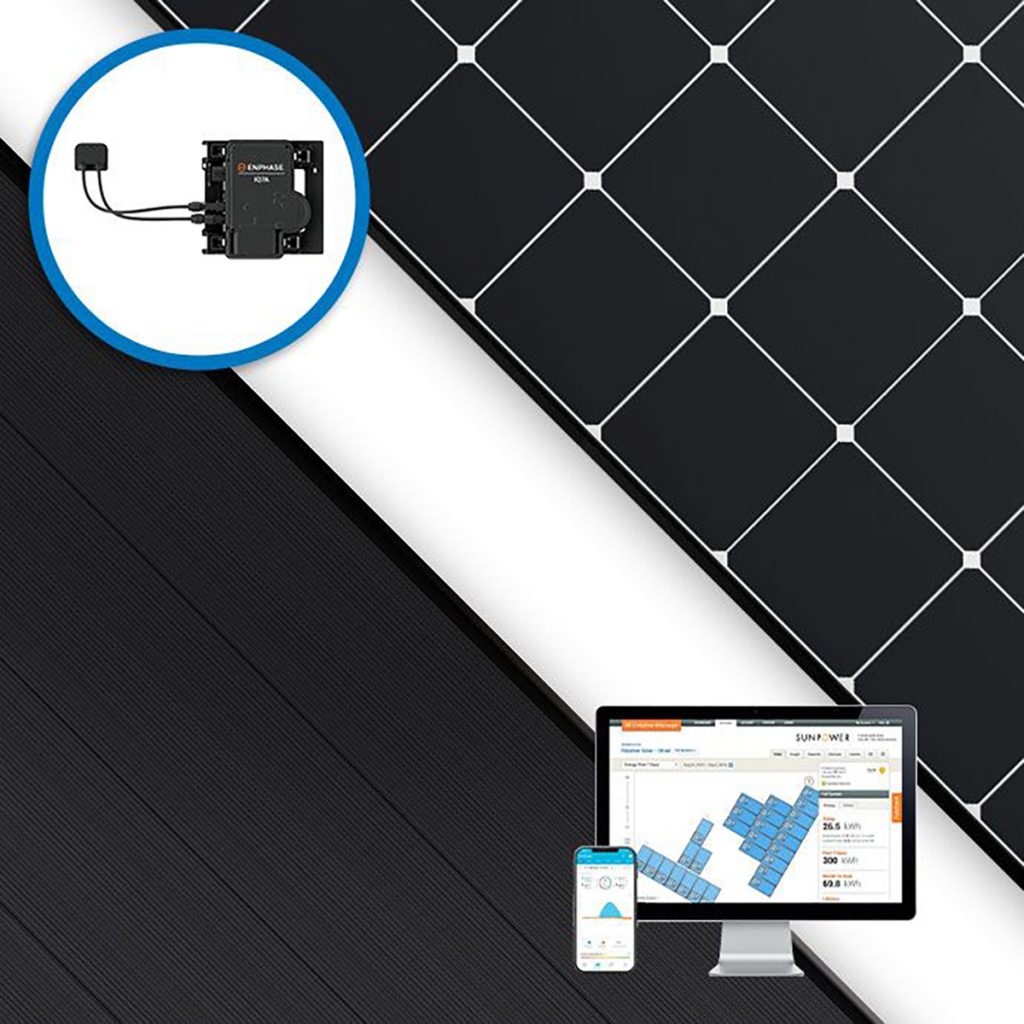This article was originally published by Qualified Remodeler in October 2022.
On August 16, President Joe Biden signed into law the Inflation Reduction Act of 2022 (IRA), a sweeping legislative package designed to combat climate change, reduce the federal deficit, lower costs for families and increase taxes on the largest corporations. While the IRA addresses three main areas of policy—taxes, clean and renewable energy, and healthcare—the energy provisions will be of particular interest to companies within the home improvement and remodeling industries.
According to the Biden administration, the IRA will result in the investment of $369 billion in energy security and climate change programs through the extension and expansion of existing tax credits; the ability to trade tax credits; and the levying of certain fees on the production of greenhouse gasses. The IRA carves out three specific clean and renewable energy tax provisions that should impact the home improvement and remodeling industries for the next 10-plus years.
Energy-Efficient Home Improvement Credit
The IRA essentially will revive the Nonbusiness Energy Property Credit (NEPC) that expired at the end of 2021 and rename it the Energy Efficient Home Improvement Credit (EEHIC). The NEPC—the old, expired credit—allowed a homeowner to claim a tax credit of 10 percent of the costs of installing particular energy-efficient insulation, windows, doors, roofing, and similar energy-saving improvements. The NEPC also allowed homeowners to claim a tax credit of 100 percent of the costs associated with installing certain energy-efficient water heaters, heat pumps, central air-conditioning systems, furnaces, and hot water boilers, as well as air-circulating fans.
The NEPC had a lifetime limit of $500 for the credit and a specific lifetime limit of $200 for new windows, severely reducing the value of the tax credit. The EEHIC—the new credit—will soon offer homeowners substantially improved tax incentives for qualifying home improvements. For the remainder of 2022, however, the EEHIC only revives the NEPC “as is,” so the old rules and limits of the NEPC apply to the EEHIC for 2022. The credit is also being expanded to cover certain biomass stoves and boilers, electric panels and related equipment, and home energy audits. Roofing and air-circulating fans, unfortunately, will no longer qualify under the EEHIC.
“One of the complaints of the prior renewable energy and clean energy tax credits was that the limits on them were not very realistic,” says D.S. Berenson, partner, Berenson LLP, and counsel to the home improvement and remodeling industries. “The limits were so low that you weren’t going to get a lot of bang for your buck for putting in energy-efficient insulation or a house full of new windows or doors. It was just very, very low. [In the EEHIC] that’s really been boosted.”
Beginning in 2023, the EEHIC credit will be equal to 30 percent of the costs for all eligible home improvements made during the year—up to a $1,200 annual limit—although some additional limits will apply:
- $150 for home energy audits,
- $250 for an exterior door ($500 total for all exterior doors),
- $600 for exterior windows and skylights; central air conditioners; electric panels and certain related equipment; natural gas, propane, or oil water heaters; natural gas, propane, or oil furnaces or hot water boilers,
- and $2,000 for electric or natural gas heat pump water heaters, electric or natural gas heat pumps, and biomass stoves and boilers (for this one category, the $1,200 annual limit may be exceeded).
The revised structure is likely to encourage savvy homeowners to spread out qualifying remodeling projects, so they can claim the maximum EEHIC credit each year. Be aware, however, that even for qualifying remodeling projects, after 2024 no EEHIC credit will be allowed unless the manufacturer of the product creates a product identification number for the item, and the taxpayer claiming the credit includes this number on his or her federal tax return.
“Because those are annual limits instead of lifetime limits, you could get creative if the customer is willing to do so, and the contractor is willing to do so by spreading out the project or multiple projects over a period of time,” Berenson notes. “In reality, it’s hard to imagine someone buying a house full of windows and wanting to spread it over three or four years. But what you could do is you could have one heck of a late fall winter sales extravaganza, where you’re splitting a job into two pieces; so, I have contract one, which I’m installing by the end of December, and then I have contract two for a second set of windows, which I’m installing in the beginning of January.
“That structure would allow the customer to take both annual limits of the tax credit; meaning, for example, depending on their structure (for instance the windows), that would be $600 at the end of the first year, and $600 at the beginning of the second year with very little inconvenience to the customer and maybe even very little inconvenience to the contractor,” Berenson explains.
Residential Clean Energy Credit
Another tax credit being revived under the IRA is the Residential Energy Efficient Property Credit (REEPC), which has been renamed the Residential Clean Energy Credit (RCEC). The REEPC provided a tax credit up to 26 percent of the cost to install qualifying systems that used solar, wind, geothermal, biomass, or fuel cell power to produce electricity, heat water, or regulate the temperature in a home. The REEPC was scheduled to drop to 23 percent in 2023 and then expire in 2024.
The RCEC jumps the credit amount to 30 percent of the cost to install these qualifying systems and extends that 30 percent through 2032, dropping to 26 percent in 2033, 22 percent in 2034 and then expiring thereafter. The credit for fuel cell equipment, however, is limited to $500 for each one-half kilowatt of capacity, and the scope of the credit is adjusted under the IRA as well. It no longer applies to biomass furnaces and water heaters, but it will apply to battery storage technology with a capacity of at least three kilowatt hours starting in 2023.
“I think most of the more experienced players in our industry are familiar with how to market and advertise energy efficient tax credits; this isn’t the first rodeo,” Berenson says. “We already have some still in play in regard to windows and doors and some of the more standard, hard home improvements. So, the question in regard to utilization will really be making sure your sales team doesn’t step over the line in what they represent and what they say. That led to a number of investigations by the federal trade commission against some of the national players back in the day that we had to deal with. And to the extent anybody’s going to be running advertising or marketing or calls to action talking about the tax credit or the tax rebates, you want to make sure—given that there’ll be eyes on that from the various attorneys general and the 1-800-SUE-U lawyers—that you have a disclosure there making very clear to advise the consumer that everybody’s tax situation is different.
“You have to consult with your own tax advisor or an accountant for a specific understanding as to how these credits or rebates would apply to you,” he explains. “If you don’t have that in the advertising and marketing, you’re setting yourself up for a real problem because as with any type of tax credit or rebate, you don’t know whether or not it’s going to apply to this particular consumer. You don’t know what they’ve taken or what they haven’t taken. The rebates specifically have income limitations.
“So, the opportunity is very aggressive marketing and advertising to educate the consumer as to the savings and the net-net costs of a number of standard home improvements. But the challenge is making sure you don’t run away with that or your sales managers and your sales reps. Don’t run away with that and start promising things that are not actually going to come true at time of filing the tax return. [Because] then you get people coming back and coming after us. That’s what we definitely want to avoid.”
High-Efficiency Electric Home Rebates
The IRA also offers a High-Efficiency Electric Home Rebate Program that is aimed to help lower and middle-income households. It is important to note that these rebates are essentially discounts for the consumer since they will be applied at the point of sale. Per the IRA, consumers who make 80 percent or less of their area’s median income can access the most money while those making up to 150 percent of their area’s median income see a smaller benefit.
Consumers may qualify for the following rebates:
- Up to $1,750 for a heat pump water heater.
- Up to $8,000 for a heat pump for space heating or cooling.
- Up to $840 for an electric stove, cooktop, range, or oven; or an electric heat pump clothes dryer.
- Up to $4,000 for a breaker box upgrade.
- Up to $1,600 for insulation, air sealing, and ventilation.
- Up to $2,500 for electric wiring.
There are other various limits under the High-Efficiency Electric Home Rebate Program; for example, the rebate cannot exceed 50 percent of the cost of a qualified project if the family’s annual income is between 80 percent and 150 percent of the area’s median income. Furthermore, each qualifying family would also be limited to no more than $14,000 in total rebates. The program’s rebates would be distributed to the consumer through state governments that establish their own qualifying programs through the IRA and are scheduled to stay in existence through Sept. 30, 2031.
“Rebates are an unusual animal in regard to government regulations and the tax code,” Berenson says. “That’s because rebates actually apply at point of sale; so, when I get a tax credit for buying energy-efficient windows, I’m not applying for that tax credit. I’m not seeing that tax credit until I’m filing my tax return, and I apply it against taxes due. But the rebate is real cash that shows up at the point of sale. The problem there is the complexity because you’re talking about real cash. And the High-Efficiency Electric Home Rebate Program is based on a lot of criteria regarding the customer’s median income and the percentage of what they make in regard to that. It’s complex.
“I don’t think we’re really going to be seeing anything available until maybe early 2024—maybe the end of 2023—as far as the best way for a contractor to utilize this, especially given the complexity of the rebates,” he adds. “I would strongly recommend that a cheat sheet be created with just the bullet points from 30,000 feet, and that [sheet] be provided either as a handout to a consumer or that the sales reps have it available [for them] to memorize. There’s no way even for experienced attorneys to understand all the intricacies of how these are going to work. A lot of it is subject to regulations that we don’t have yet.”
When can the tax credits be taken by customers?
The Energy-Efficient Home Improvement Credit (EEHIC) tax credits are scheduled to begin in 2023 and can be taken in the year that the remodeling project is completed. In legal terms, the project is completed when it is “placed in service.”
Usually this does not cause confusion, but it can be tricky in late December if a contractor has an installation completed but no permit or final inspection. So long as the product has been installed and is usable, then for tax credit purposes the customer should be able to claim it in that tax year.
Also keep in mind that monies paid in one year would carry over into the subsequent year when installation is completed. For example, a down payment made at the end of 2023 for a job that is not installed until 2024 would still be part of the overall cost of the job in calculating the tax credit for 2024.
Source: Berenson LLP
Do the tax credits apply to the entire purchase price of the job?
Historically, these types of tax credits apply against the cost of the goods themselves, not in regard to the cost of installation. This can create a bit of an issue given that in the industry, contractors tend not to break out the difference between product and labor on a work order. While some contractors might begin doing this to assist consumers, it’s not recommended for a host of legal and operational reasons.
Instead, a separate one-page tax credit assistance form can be utilized that indicates, for example, the price of the windows for purposes of calculating tax credit applicability. It’s also very important to make sure there’s a disclaimer on such a form advising the consumer to consult with their own tax advisers.
Source: Berenson LLP
Are EEHIC tax credits available for any type of window?
The Energy Star webpage currently only reflects the existing tax credit structure for 2022, not the new tax credits that are going into effect in 2023. Under the new credits, windows and skylights need to meet the Energy Star most efficient certification requirements.
The Most Efficient rating has not yet been established for 2023. It’s a threshold that recognizes products that perform at higher levels of energy efficiency. Here are the windows that currently qualify under the 2022 Most Efficient rating: https://www.energystar.gov/products/most_efficient/vertical_slider_windows.
Source: Berenson LLP
How will the tax credits apply to a contractor’s solar business?
The credit is retroactive to the start of 2022. This means that solar installations completed between Jan. 1, 2022, and Dec. 31, 2032, should qualify for the 30 percent credit. What’s particularly unique about the credit is that there’s no dollar limit: A customer is entitled to the 30 percent tax break whether they are spending $25,000 or $125,000 on the residential solar system—and there is no income level restriction.
The expenses that should qualify for the 30 percent are as follows:
- Solar photovoltaic (PV) panels.
- PV cells used to power an attic fan (but not the fan itself).
- Contractor labor for onsite preparation, assembly, or original installation.
- Permitting fees, inspection costs, and developer fees.
- All the equipment needed to get the solar system running, including wiring, inverters, and mounting equipment.
- Storage batteries. (The tax credit should apply to storage batteries even if they are purchased and installed a year or more after the system itself is purchased and installed)
- Sales taxes on eligible expenses.
The tax credit, however, only works on an actual purchase; the lease of a solar system will not qualify. Keep in mind that if a customer is also getting a state tax credit on a solar system, that will not offset the federal credit. But the inverse may not be true: State credits, depending on the state regulation, may be reduced by the federal credit.
Source: Berenson LLP
Energy-Efficient Products
Pella 250 Series window frames are 52 percent stronger than ordinary vinyl and resist warping and twisting. The multiple insulating frame chambers and exclusive weather-repel system deliver energy efficiency while channeling water away from the home. Add optional foam insulation and triple-pane glass to improve energy efficiency. Upgraded triple-pane windows are on average 62 percent more energy-efficient than single-pane windows.
pella.com/ideas/windows/250-series

The Marvin Elevate collection is an ideal blend of remarkable design and superior strength, bringing balance to a homeowner’s style and performance needs. Proprietary fiberglass exteriors stand up to all elements, outperforming and outlasting vinyl, roll-form aluminum and other composites. Warm wood interiors add timeless beauty, while resilient, long-lasting fiberglass stays strong in even the toughest conditions.
marvin.com/products/collections/elevate

Mitsubishi Electric Deluxe Wall-mounted H2i plus Systems perform at 100 percent capacity in outdoor temperatures as low as -5° F. Users can stay comfortable inside and enjoy dependable HVAC operation with reduced need for fuel-burning or electric-resistance heating when the system is sized correctly. MUZ-FS heat pumps also pair with MSZ-FS Wall-mounted Indoor Units equipped with Dual Barrier Coating.
mitsubishicomfort.com/residential/new-products

The Trane XV20i Variable Speed Heat Pump gives users comfort by running at the speed the home needs to stay comfortable. This allows the variable speed compressor, outdoor fan, and indoor fan to vary their speed as the temperature outside changes, slowing down or speeding up gradually when needed. The heat pump has ratings up to 20 SEER and 10 HSPF and can connect to the ComfortLink II thermostat.
trane.com/residential/en/products/heat-pumps/xv20i

SunPower Maxeon 6 AC Solar Panels are up to 22.8 percent efficient and designed to maximize energy generation through leading efficiency, enhanced performance in high temperatures, and higher energy conversion in low-light conditions like mornings, evenings and cloudy days. Each panel’s microinverter enables independent panel operation to mitigate the impact of shade while improving system performance.

